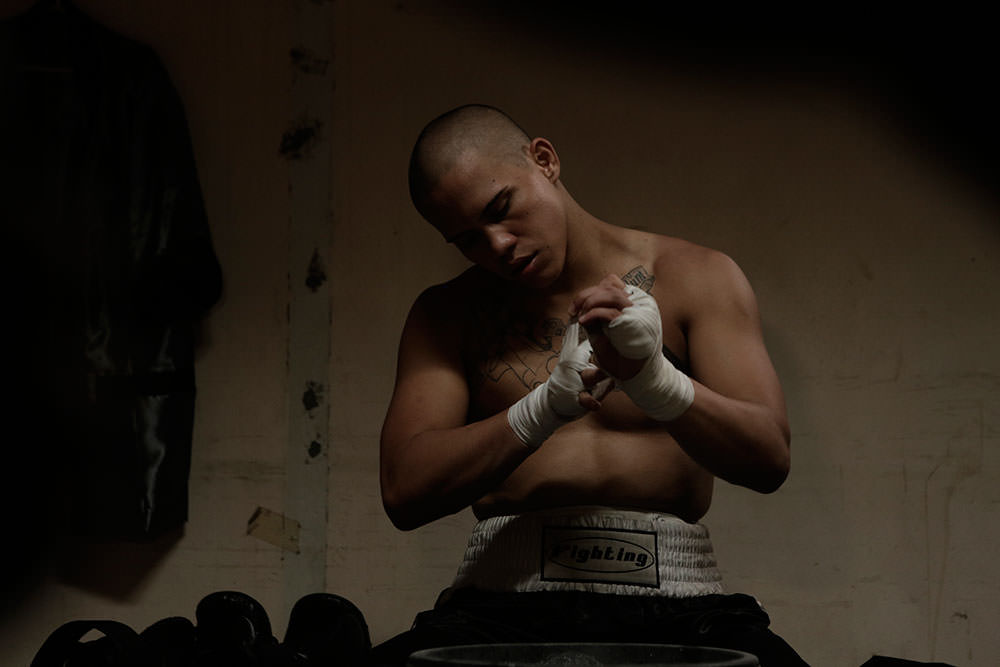- Beast.
Beast co-writer/co-director Sam McKeith on the pros and cons of creating an Australian film in the Philippines. By Caris Bizzaca
Filmmakers and brothers Sam and Tom McKeith never intended to shoot Beast in the Philippines, but the decision arguably sped up their leap from shorts into features.
The pair have had short films at Berlin, Telluride and Busan since graduating from AFTRS some six years ago. An early incarnation of Beast (then called Dealer) came through Screen Australia’s Springboard workshops and received some early development funding, before going through Screen NSW’s Aurora program. It took a year and a half to write, along with the help of Will Jaymes, who also co-produced.
“Usually how it works is one of us will have an idea, and then we’ll workshop it together into a treatment,” Sam says of working with his brother.
“From there, one person, usually the person who had the idea will take the lead on the writing of the script, and then the other person will rewrite it.”
But after a number of short films, tackling their debut feature Beast was an entirely different, well, beast.
“Short films are more of a really broad, flexible form. Whereas, with features, you’ve got to be a little bit more rigorous on the craft side with the story and the script,” he says.
“There’s also the financing side, which just takes a long time.”
Reportedly making the film for less than $1 million, the decision to set it there was initially financial – a suggestion from Filipino producers they met at Busan International Film Festival as they struggled to raise finance back home. But it ended up working better on a story level as well. In Beast, a boxer (Chad McKinney) accidentally kills his opponent, and the underground boxing culture depicted in the film very much exists in the Philippines, but would have been less plausible in Australia.
“And they have a very vibrant culture of independent filmmaking there so they had a team that was used to working with small-budgets,” Sam says.
But it wasn’t all smooth sailing from the time they arrived in Manila.
“We were very stressed out because we got over there with about a month until we would shoot and we didn’t have a lead actor,” he says.
A casting call was filled with actors used to auditioning for local soaps, rather than believable boxers. And so they began scouting at gyms.
Jaymes was the one who found McKinney, an actual boxer. With zero screen experience, he recorded a “phenomenal” screen test and landed the job, appearing in basically every scene in the film.
“We just took a risk on him (but) he anchors the film really well and he’s one of the real stand-out elements of the movie,” Sam says.
He also credits US actor Garret Dillahunt, who plays McKinney’s onscreen father, for taking the boxer under his wing. McKinney would memorise his lines half an hour before a shot, improvise a lot and had an instinctual approach, whereas Dillahunt had a completely different process – and yet they made it work. (After travelling with the team to the world premiere at Toronto International Film Festival, McKinney is now back to boxing full-time.)
- Beast.
There were pros and cons to filming in Manila.
Aside from the lower cost, Sam says that it’s easier to film on location.
“It’s so easy to shoot in markets, malls, anywhere. You just get the owners approval.”
However the Filipino crews work differently.
“They will shoot a film in say 10 days, but with 16-hour days and one day off in the week,” Sam says, adding they ended up working more like 14-hour days.
“It’s very tiring doing it their way, but you really did get in the zone.”
The crews are also much larger.
“They don’t have insurance for any of their camera gear, so one person will basically guard each piece of equipment and you end up with a gigantic crew which can be quite cumbersome,” he says.
“Having a huge convoy of trucks with all these people can be unwieldy at times (especially as) Manila itself is very chaotic. Traffic’s terrible, so it’s (already) very hard to move around.”
It was challenging, particularly as for budget reasons, they were short on time and often arriving at locations having not seen them before.
“So we were having to figure out quite frantically how to block the scene,” he says.
They shot on the ARRI AMIRA with frequent collaborator Mike Steel as cinematographer, and had two cameras most of the time so there were more options in the edit.
“In terms of performance, we’d maybe get about five or six takes depending on the set-up,” he says, with the docu-drama shooting style meant they could cut around the performances in the edit.
Post-production was “quite gruelling”, but aided significantly by completion funding from Screen Australia.
And it paid off, with Beast selected for TIFF in 2015, before going on to screen at Sydney Film Festival in June this year.
Sam says the festivals have been significant in helping Beast reach audiences.
“It looks like distribution locally is getting really difficult for Australian films,” he says. “Our film in particular, falls a bit between commercial and truly arthouse.”
It’s something they will be keeping in mind for their next project. As for what that is, the brothers have a few ideas on the boil – some are collaborations, some as their own ventures.
“Given this took three years you’ve got to be really careful about what you pick,” Sam says.
Beast is in select cinemas now. Click here or see below for more info.
NSW
Dendy Newtown, plus a special event Q&A on 6 Oct
http://www.dendy.com.au/Promotion/Beast-Qa-Dendy-Newtown
VIC
ACMI plus a Q&A on 8 Oct 8




